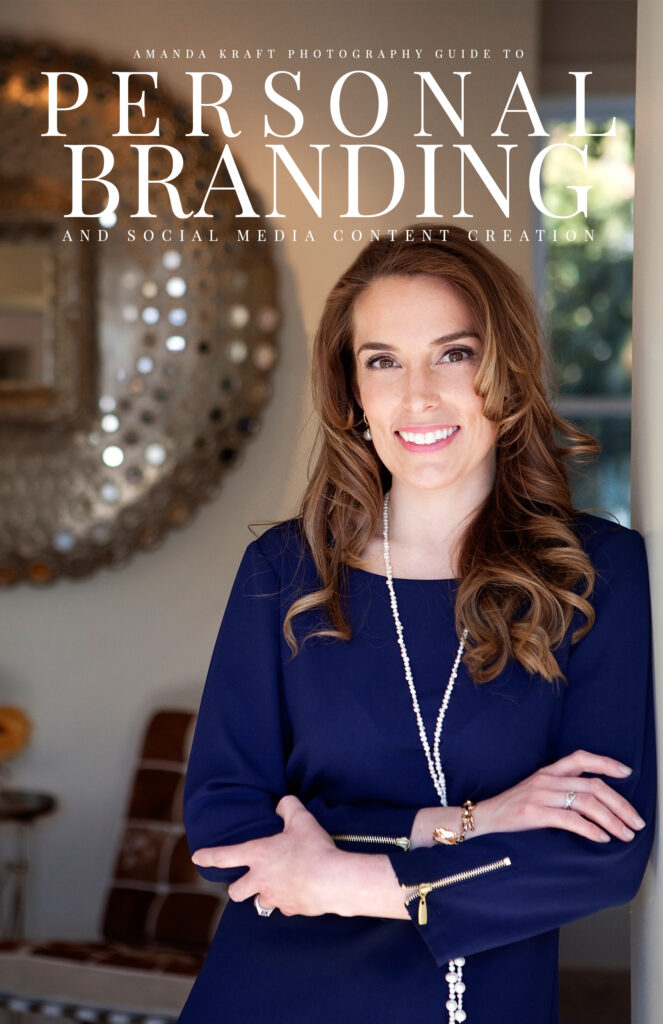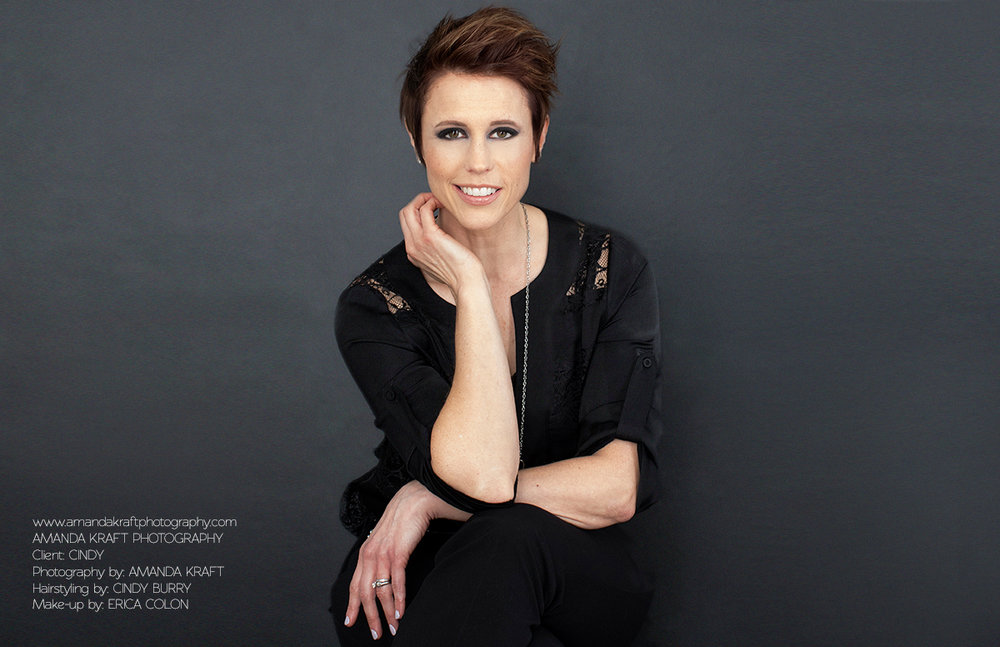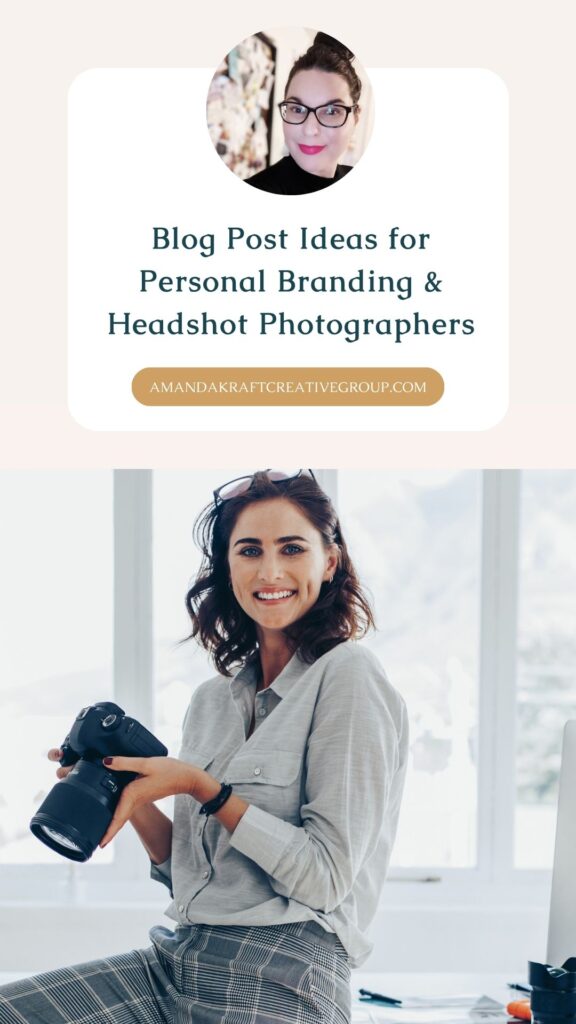Browse around
Hey Photographer!
I’m a Virtual Studio Manager, Creative Business Strategist, and former photographer turned operational powerhouse.
I'm Amanda
With a no-BS approach, a can-do attitude, and my loyal fur missile, Oakley, by my side, I’m here to help you cut through the noise and build a business that works as hard as you do. Let’s take those big, scary dreams and turn them into real, tangible wins—one bold move at a time
Master the Art of In-Person Sales
FOR PHOTOGS
Free Guide: Find the Perfect Studio Manager
VIRTUAL SUPPORT
3 Mistakes I Made in My Photography Business
REAL TALK
What I am Currently Reading
EVERY DAY LIFE
Blog Post Ideas for Personal Branding and Headshot Photographers

Posted In
August 19, 2024
Posted On
Having been in the photography world for over 20 years, I’ve seen firsthand how powerful a single image can be. But one thing I’ve learned over time is that a single photo often isn’t enough to tell the full story. That’s why crafting engaging content is essential. If you’re looking for blog post ideas for personal branding and headshot photographers, focus on showcasing the many facets of a client’s personality and brand, creating images that truly resonate beyond just headshots.
So, how do you establish yourself as the go-to photographer for these sessions? It all starts with the content you create. Here are some creative blog post ideas for blog post ideas for personal branding and headshot photographers to you position yourself as an expert, educate your clients, and show the immense value of what you offer.
The Art of a Powerful Headshot
Creating a headshot that truly conveys confidence and professionalism takes more than just technical skills. It’s about understanding your client’s goals, helping them feel at ease, and guiding them through the right poses and expressions.
Sample Blog Post Idea: “5 Tips for Creating Headshots that Make a Lasting Impression”
In this post, you can break down the key elements that contribute to a powerful headshot: from the importance of connecting with your client beforehand to help them relax, to the subtle nuances of body language and expressions. For example, talk about how you guide clients to achieve that perfect blend of confidence and approachability—whether it’s through a slight tilt of the head, a gentle smile, or how they position their shoulders.
My Tip: Share your go-to posing techniques that bring out the best in your clients. Talk about the importance of lighting—whether natural or studio—to highlight their features without overwhelming the shot. For example, I often use a softbox to diffuse light and create that professional, yet approachable look that’s perfect for headshots.
Example: “I once had a client who was incredibly nervous about their headshot. We spent the first 10 minutes just chatting, and I offered simple adjustments in posture—like having them stand at a slight angle rather than straight on—that made them feel more comfortable and look more confident. By the end of the session, they were radiating self-assurance, and it showed in every shot.”
SEO Tip: Include internal links to your headshot portfolio and related posts on posing and lighting. Use keywords like “headshot photography tips,” “posing for professional headshots,” and “lighting techniques for headshots.”

How to Prepare for a Personal Branding Session
Preparation is key to a successful personal branding session. Help your clients feel prepared and confident by providing them with a step-by-step guide on what to do before the big day.
Sample Blog Post Idea: “Your Ultimate Guide to Prepping for a Personal Branding Photoshoot”
In this post, break down everything your client should consider before stepping in front of your lens. Discuss outfit choices, brand message alignment, and how setting goals can make the shoot more effective. Consider including a downloadable checklist or a pre-session questionnaire to help clients gather their thoughts and get organized.
My Tip: Talk about the importance of outfit choices, how to align the session with their brand’s message, and how setting goals can make the shoot more effective. I always recommend a pre-session consultation to discuss these details, ensuring we’re both on the same page when it comes to their vision.
Example: “For a recent client who was rebranding her financial consulting business, we spent time in our pre-session chat discussing how she wanted to be perceived: knowledgeable yet approachable. This informed everything from her wardrobe choices (classic, well-fitted blazers) to the poses (confident, but not too formal). By aligning on these details upfront, the session was a breeze.”
SEO Tip: Backlink to preparation guides and include internal links to posts on personal branding and session tips. Use keywords like “personal branding session prep,” “outfit tips for branding photography,” and “how to plan a branding photoshoot.”
Top Trends in Personal Branding Photography
Headshot and personal branding photography is constantly evolving, and staying on top of trends can help you offer fresh and relevant content to your clients.
Sample Blog Post Idea: “Current Trends in Personal Branding Photography You Need to Know”
This post could highlight trending styles in the industry, like the shift from corporate headshots to more lifestyle and environmental portraits. You can also touch on emerging techniques, such as the use of candid or behind-the-scenes shots that add depth to a brand’s visual narrative.
My Tip: Discuss current trends, such as incorporating lifestyle shots or behind-the-scenes b-roll, and how they can enhance a client’s brand. Explain how you’ve incorporated these trends into your work and why they’re effective. “Lately, I’ve been integrating more candid, behind-the-scenes shots into my branding sessions, which helps to tell a more authentic story of the brand.”
Example: “I recently worked with a tech startup founder who wanted to break away from the typical stiff headshots. We shot in his office, captured candid moments of him interacting with his team, and even got some shots of him sketching out ideas on his whiteboard. The result? A dynamic set of images that felt true to his brand—innovative, approachable, and hands-on.”
SEO Tip: Link to trend reports and include internal links to posts on modern branding techniques and client success stories. Use phrases like “branding photography trends,” “modern personal branding,” and “trending photography styles.”

Client Story: How [Client’s Name] Transformed Their Brand with Photography
Nothing shows the power of your work better than real-life success stories. Share a detailed account of how you helped a client elevate their brand through photography.
Sample Blog Post Idea: “Transforming a Brand: A Behind-the-Scenes Look at [Client’s Name]’s Journey”
This post could dive deep into a client’s experience, from the initial consultation to the final images. Share before-and-after photos if possible and discuss the client’s goals, your process, and the outcome.
My Tip: Highlight the client’s initial goals, how you collaborated to create a plan, and the final results. “When [Client’s Name] came to me, they were looking to refresh their brand image. Through careful planning and a personalized session, we were able to create photos that not only met but exceeded their expectations.”
Example: “One of my favorite projects was with a wellness coach who wanted to rebrand her business to attract a more corporate audience. We discussed her goals, selected a modern office location for the shoot, and captured both polished headshots and casual lifestyle shots. The transformation was incredible, and she’s since landed several new high-profile clients.”
SEO Tip: Include links to the client’s branding portfolio or testimonial page. Add internal links to similar client stories and branding tips. Use keywords like “branding photography success story,” “transforming a brand with photography,” and “client testimonials.”
Creating a Personal Branding Mood Board
A mood board is an excellent tool for visualizing the direction of a branding session. Share tips on how to develop one that captures your client’s vision.
Sample Blog Post Idea: “How to Create a Mood Board That Perfectly Captures Your Brand”
In this post, guide your readers through the process of creating a mood board that aligns with their brand’s visual identity. Discuss the importance of selecting the right colors, textures, and imagery to ensure consistency across their branding materials.
My Tip: Talk about the importance of themes, colors, and styles, and how creating a mood board can help align your vision with your client’s. “A mood board is where the magic begins. It’s the foundation of your branding session, ensuring every shot reflects the story we want to tell.”
Example: “For a personal branding session with a wellness entrepreneur, we crafted a mood board that combined soft pastel colors, natural textures, and images that evoked a sense of calm and renewal. This helped us create a cohesive visual story that resonated deeply with her brand’s mission.”
SEO Tip: Backlink to mood board creation tools or guides. Link internally to posts on branding session planning and preparation. Use phrases like “creating a mood board for branding,” “personal branding session planning,” and “branding photography themes.”

The Best Outfits for Personal Branding Photos
The right outfit can make all the difference in a personal branding session. Offer advice on selecting outfits that reflect your client’s brand while maintaining a professional image.
Sample Blog Post Idea: “What to Wear for a Personal Branding Photoshoot: Outfit Tips for Every Industry”
This post could offer outfit suggestions tailored to various industries—whether your client is a lawyer, a creative entrepreneur, or a fitness coach. You could also touch on the importance of fit, color, and accessories in creating a polished look.
My Tip: Suggest outfit options based on the client’s industry, brand personality, and how they want to be perceived. “For a lawyer, I might suggest a classic, tailored suit, while a creative entrepreneur might go for something more vibrant and unique.”
Example: “I had a session with a tech entrepreneur who wanted to break the mold of the traditional ‘tech geek’ image. We chose a sleek, modern outfit that reflected both her professionalism and her innovative spirit. The result was a set of photos that stood out in her industry.”
SEO Tip: Include links to fashion blogs or styling guides. Internally link to posts on personal branding photography and outfit prep tips. Use phrases like “what to wear for branding photos,” “personal branding outfit ideas,” and “outfit tips for headshots.”
Breaking the Ice: How to Feel Comfortable During Your Photoshoot
Many people feel nervous about being in front of the camera, especially during a professional photoshoot. But with the right approach, you can feel relaxed and confident, leading to more authentic and stunning photos.
Sample Blog Post Idea: “5 Simple Tips to Feel More Comfortable During Your Photoshoot” In this post, offer your clients practical advice on how they can prepare mentally and physically for their session. Share tips on how to ease nerves, what to expect during the shoot, and how to enjoy the experience.
My Tip: Before the session, I always recommend having a casual chat or even a virtual coffee meeting. This helps us get to know each other better and makes the session feel less intimidating. Also, bring along anything that makes you feel comfortable, whether it’s your favorite music, a friend, or even a fun prop.
Example: “I had a client who was really anxious about her headshots, so we started the session by talking about her favorite travel spots. This light conversation helped her relax, and soon, she was laughing and enjoying the shoot. By the end, her confidence shone through in every photo.”
SEO Tip: Include internal links to posts on session preparation and what to expect during a photoshoot. Use keywords like “how to feel comfortable during a photoshoot,” “overcoming camera nerves,” and “making your photoshoot a positive experience.”
Client Nurture Tip: To further support your clients, consider creating a nurture email sequence that echoes the theme of making them feel comfortable every step of the way. This sequence can provide pre-session tips, reassure them about what to expect, and build excitement for the upcoming shoot. For example, your emails could include a welcome note, a checklist of things to prepare, and a friendly reminder of the benefits of working with you. This approach helps ease any anxiety and sets the stage for a smooth, enjoyable photoshoot experience.
The Importance of Consistency in Personal Branding Photography
Consistency is key when it comes to branding. Your clients need to ensure that their images across all platforms—whether on their website, LinkedIn, or social media—reflect a cohesive brand identity.
Sample Blog Post Idea: “Why Consistency in Branding Photography Matters (And How to Achieve It)”
In this post, you can emphasize the importance of maintaining a consistent visual style across all branding materials. Discuss how to ensure that the colors, tones, and overall aesthetics of your images align with the client’s brand.
My Tip: Explain how you ensure consistency in your work, from initial planning to final editing. Discuss the importance of sticking to a particular style or color palette and how it reinforces brand recognition.
Example: “For a recent client, we created a series of images that used the same color scheme and lighting style throughout. This consistency helped them present a unified brand identity across their website, social media, and marketing materials.”
SEO Tip: Link to posts on brand identity and photography style guides. Use keywords like “branding photography consistency,” “how to maintain a consistent brand image,” and “visual identity in branding.”

Behind the Lens: A Day in the Life of a Personal Branding Photographer
Giving your audience a peek behind the scenes can make your work more relatable and humanize your brand. Sharing what a typical day looks like can also highlight the amount of preparation and effort that goes into each session.
Sample Blog Post Idea: “A Day in the Life: What It’s Like to Be a Personal Branding Photographer”
Take your readers behind the scenes, sharing your process from start to finish. This could include everything from planning and prepping for a session, the actual photoshoot, and post-production. It’s a great way to showcase your professionalism and attention to detail.
My Tip: Use this post to show the depth of your involvement in every aspect of the shoot, from selecting the right equipment to editing the final images. Highlight the little details that make your work stand out—like how you tailor each session to the client’s brand.
Example: “On the day of a shoot, I start with a review of my client’s mood board and goals. I arrive at the location early to scout the best lighting and angles, and I always bring a backup camera and extra batteries—because you never know what might happen!”
SEO Tip: Include internal links to posts on your photography process and client testimonials. Use keywords like “personal branding photographer behind the scenes,” “a day in the life of a photographer,” and “how I prepare for branding sessions.”
How to Use Personal Branding Photos to Build Your Online Presence
Once the photos are taken, it’s crucial to educate your clients on how to leverage these images across their online platforms. This not only adds value to your services but also positions you as a strategic partner in their branding journey.
Sample Blog Post Idea: “Maximizing Your Online Presence with Personal Branding Photography”
Guide your readers on how to effectively use their branding photos on websites, social media, and marketing materials. Provide tips on optimizing images for different platforms and how to keep their visuals consistent across all channels.
My Tip: Suggest specific platforms and formats for sharing branding photos, like using professional headshots on LinkedIn, more casual lifestyle shots on Instagram, or a hero image on their website’s homepage. Encourage clients to update their images regularly to keep their online presence fresh and relevant.
Example: “One of my clients used her branding photos to refresh her entire website, adding a cohesive look that reflected her new brand identity. She also used the images for her social media profiles and marketing materials, creating a unified presence across all platforms.”
SEO Tip: Include links to posts on social media tips and website optimization. Use keywords like “how to use branding photos online,” “building an online presence with photography,” and “personal branding for social media.”
Remember, the more you educate and nurture your clients about the experience, what they can expect, and how to maximize their investment, the more confident and satisfied they’ll be in working with you. This confidence not only strengthens your relationship but also helps them see a clear return on their investment.
For further inspiration, check out these related blog posts:
- How to Repurpose Your Blog Content
- How to Craft the Perfect Blog Post
- Continue Reading Our Blog Post Idea Series for Photographers
Your blog is more than just content—it’s a powerful tool to build trust, enhance client experience, and drive your business forward.
P.S. Still need help creating blog content or creating a consistent posting schedule, as a virtual studio manager for luxury photographers this is one of the operational tasks I offer. Curious, if working with a studio manager is right for you? Click here for my guide: Find the Perfect Studio Manager or skip ahead and book a meet and greet call with me, here.
10 Creative Blog Post Ideas for Personal Branding and Headshot Photographers

Pin
Share
Leave a Reply Cancel reply
Client Onboarding Guide
NEW IN THE SHOP
Wedding Photographer
Social Media Templates
NEW IN THE SHOP
Elevate Your Virtual Assistant Business
COACHING
Master the Art of In-Person Sales
For Photogs
3 Mistakes I made in My Photography Business
real talk
EVERY DAY LIFE
What I am Currently Reading
You May Also
Previous Story
next Story
I'm so glad you're here, stick around, there's so much to see,
xo, Amanda